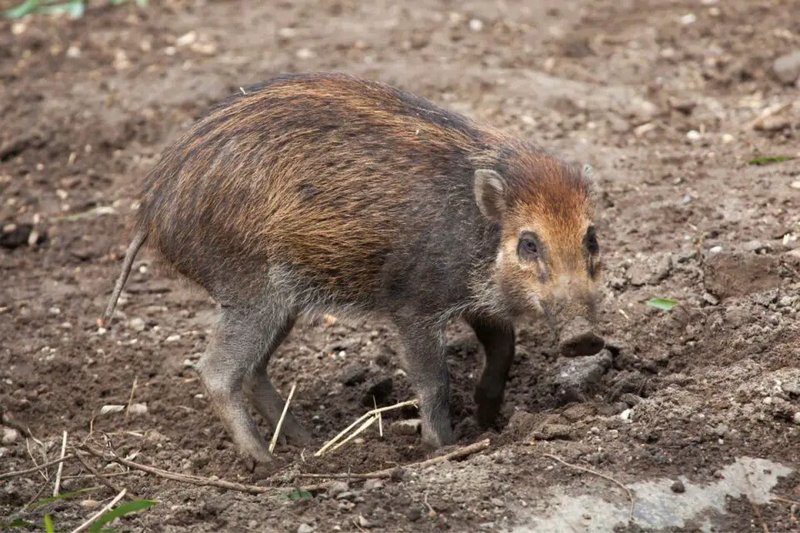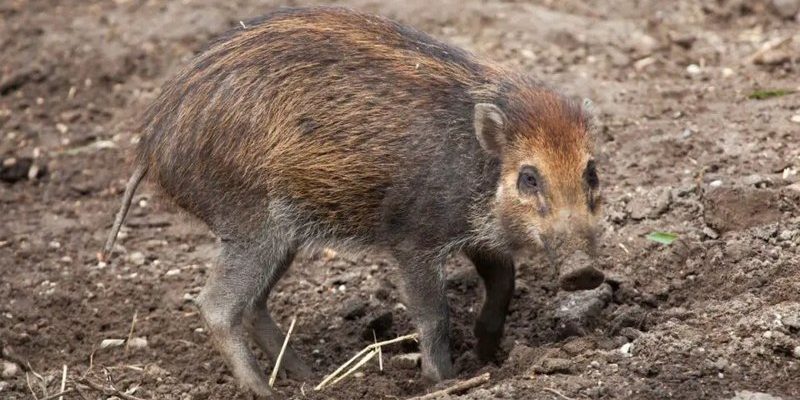
Imagine you’re at a zoo and you spot a Visayan Warty Pig, with its rugged appearance and warty face. The charm of these creatures lies not just in their looks but their unique adaptations and habitats. Understanding animals similar to the Visayan Warty Pig can deepen our appreciation for biodiversity and conservation. So, let’s explore ten animals that resemble this fascinating pig and learn how to distinguish them from one another.
1. The Domestic Pig
The **Domestic Pig** is probably the most recognized member of the pig family. Like the Visayan Warty Pig, it belongs to the same biological family, Suidae. However, there are key differences to note. Domestic pigs come in a variety of shapes, sizes, and colors, thanks to selective breeding.
You might notice that domestic pigs often have a smoother coat and a more rounded body compared to the Visayan Warty Pig’s rough, bristly fur. Additionally, domestic pigs are generally larger and lack the characteristic warts that give the Visayan its name. If you see a pig with a glossy coat and a round figure, chances are it’s domestic.
2. The Bornean Bearded Pig
Next up is the **Bornean Bearded Pig**. This species is closely related to the Visayan Warty Pig and is found in tropical forests of Borneo. At first glance, it might look quite similar, but a closer inspection reveals some interesting differences.
The Bornean Bearded Pig boasts a distinctive beard-like feature that hangs from its chin, hence the name. In contrast, the Visayan Warty Pig does not have this trait. Both species have a similar body shape and size, but you’ll notice the Bornean Bearded Pig has longer, more slender legs and a less pronounced warty appearance. So, if you spot a pig with a facial hairdo in Borneo, you’ll know it’s not a Visayan Warty Pig!
3. The Eurasian Wild Boar
The **Eurasian Wild Boar** is another strong contender in the pig family. Commonly seen in Europe and Asia, this wild relative shares some features with the Visayan Warty Pig but also has unique characteristics.
You might wonder about the size—Eurasian Wild Boars are generally larger and more robust than their Visayan cousins. They have a thicker, more muscular build and a darker coat. Additionally, while both have tusks, the wild boar’s tusks are much larger and more pronounced. If you’re in the wild and encounter a hefty pig with impressive tusks, you can be sure it’s not a Visayan Warty Pig.
4. The Peccary
This species, known as the **Peccary**, is not exactly a pig but is often mistaken for one. Found in the Americas, peccaries have similar body shapes but differ significantly in behavior and habitat.
Unlike the Visayan Warty Pig, peccaries are smaller and have a distinctly different face shape. They also have a more social nature, often traveling in groups, whereas the Visayan Warty Pig tends to be more solitary. If you see a compact animal foraging in the underbrush in the Americas, look closely. It might just be a peccary rather than a Visayan Warty Pig!
5. The African Bush Pig
The **African Bush Pig** is another fascinating relative. Found in sub-Saharan Africa, these creatures share a few traits with the Visayan Warty Pig but also have their own unique features.
Bush pigs are generally larger and sport a coarse, bristly coat that can be brown or black. One key difference is their ears, which are more prominent and rounded than those of the Visayan Warty Pig. If you happen to travel to Africa and encounter a rust-colored pig rummaging through leaves with big ears, know that it’s likely an African Bush Pig, not a Visayan.
6. The Wild Boar of Sri Lanka
In Sri Lanka, you’ll find the **Wild Boar**, another variant closely related to both the Eurasian Wild Boar and the Visayan Warty Pig. While they share some physical traits, there are differences worth mentioning.
Sri Lankan Wild Boars typically have a more elongated body and a bushier coat compared to their Visayan counterparts. Additionally, their coloring can vary from light brown to almost black, whereas the Visayan Warty Pig has more distinct lighter patches on its body. Spotting them in the wild can be exciting—just remember to look for those body shapes and coat textures!
7. The Javan Warty Pig
The **Javan Warty Pig** is another close relative found in Indonesia. As the name suggests, it shares that warty admiration with the Visayan Warty Pig but boasts some different characteristics.
Javan Warty Pigs tend to be larger and have a more pronounced snout. You’ll also notice they have fewer warts and a slightly different body shape. Their habitats are generally more mountainous, making them less likely to be spotted in flat lowland areas. If you find yourself hiking in Indonesia and see a hefty pig with a longer face, it could very well be the Javan Warty Pig.
8. The Red River Hog
Take a trip to Africa, and you might encounter the **Red River Hog**. These pigs are known for their striking reddish-brown fur and unique facial pattern. While they may seem similar at first glance, they possess several distinctive features.
Red River Hogs are smaller and have a more slender build compared to the Visayan Warty Pig. They also have very prominent tusks and striking white markings on their faces and bodies. If you’re in the African savanna and see a pig with vibrant fur and eye-catching stripes, you know it’s a Red River Hog, not a Visayan Warty Pig.
9. The Babirusa
In Indonesia, there’s a fascinating creature known as the **Babirusa**. With its unique appearance and lifestyle, it stands out in the pig family. While it shares a family resemblance with the Visayan Warty Pig, the differences are clear.
Babirusas are known for their long, upward-curving tusks, which can even grow through their skin. They have a more slender body and smoother coat than the Visayan Warty Pig. You might find babirusas in marshy forests, which is different from the Visayan’s preference for hilly areas. So, if you stumble upon a pig with some stunning tusks in Indonesia, you’ll know you’ve found a babirusa, not a Visayan Warty Pig.
10. The Capybara
Lastly, the **Capybara** is a bit of a wildcard in this list. While not a pig, this giant rodent shares some similarities in size and social behavior. Found in South America, capybaras can often be spotted in groups near water bodies.
Their resemblance to pigs comes from their stout body and social nature. However, they have a completely different set of features, including a much shorter snout and fur instead of bristles. If you see a large, furry animal lounging by a river, you can be sure it’s a capybara enjoying the sun, and not a Visayan Warty Pig, which prefers more rugged terrain.
In summary, while the Visayan Warty Pig is a fascinating creature with its own quirks and characteristics, there are many animals that share similarities with it. Discovering these differences not only broadens our knowledge but reminds us of the incredible variety within the animal kingdom. Whether it’s the wild boars, peccaries, or even the capybara, each species showcases the beautiful diversity of life on our planet. So the next time you read about or see a Visayan Warty Pig, you’ll appreciate how its relatives contribute to the rich tapestry of nature.

